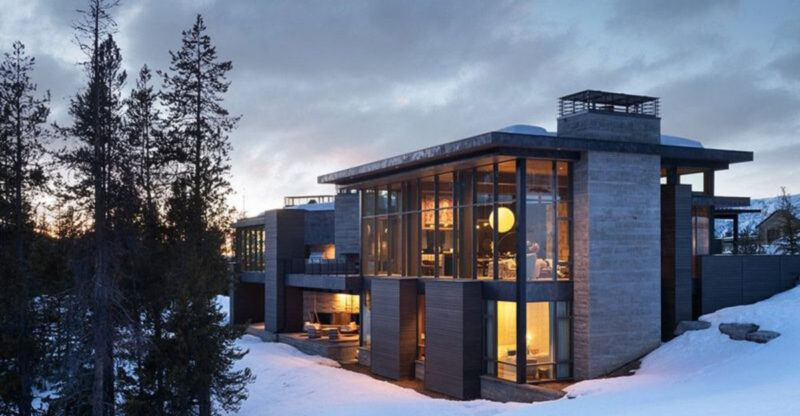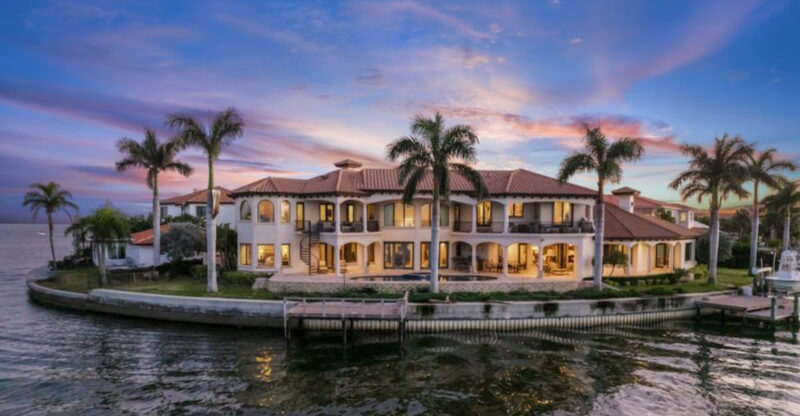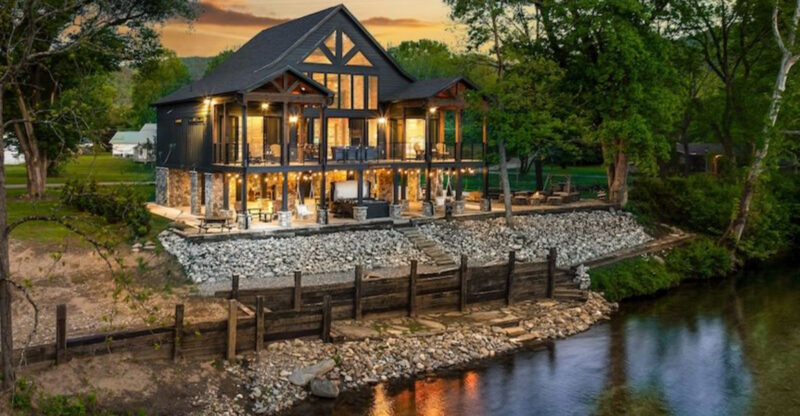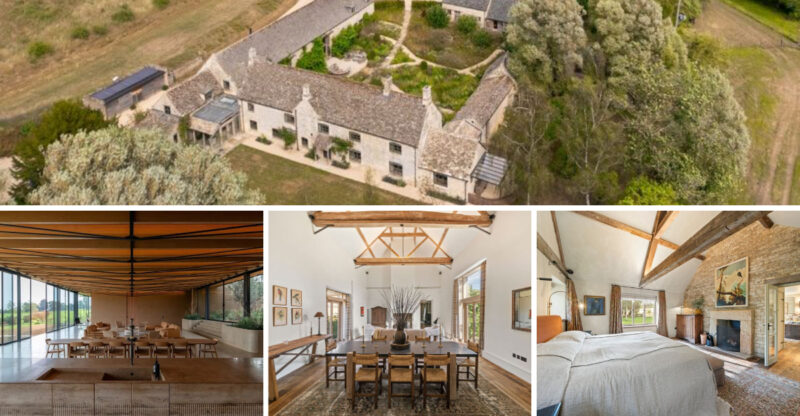21 Historic Mansions In New York State Stretch Out On Exclusive Properties
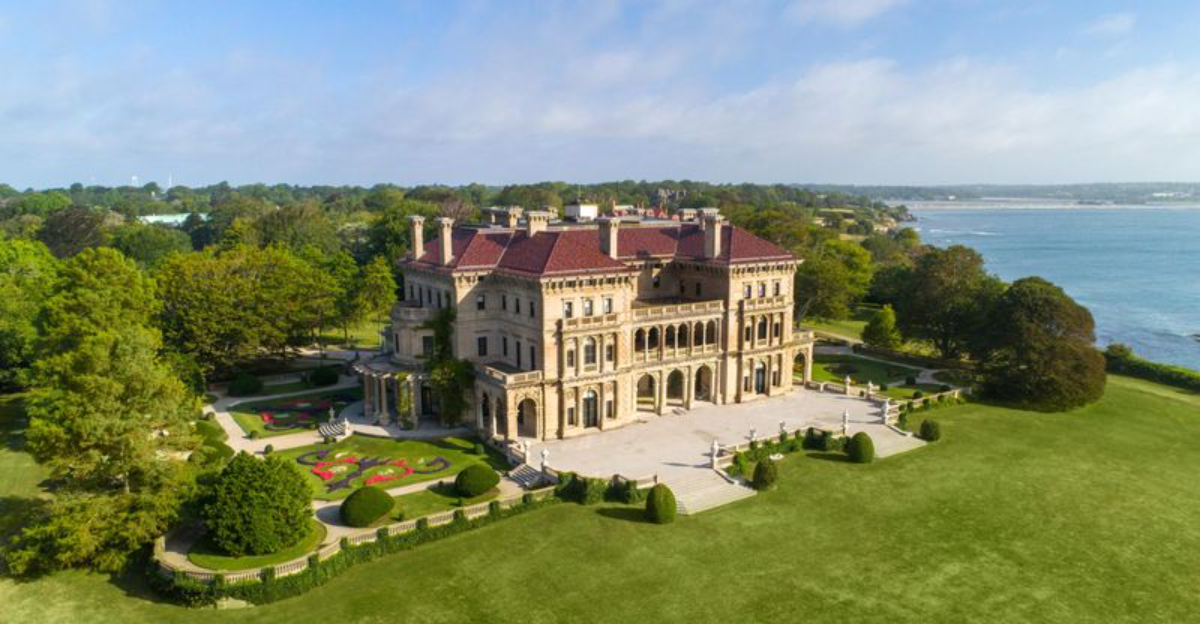
New York State is home to some of America’s most stunning historic mansions, each telling a unique story of wealth and ambition.
These grand estates, built by industrial tycoons, railroad magnates, and America’s elite families, showcase incredible architecture and sprawling grounds.
From the Hudson Valley to the Thousand Islands, these magnificent properties offer glimpses into the opulent lifestyles of America’s Gilded Age aristocracy.
1. Hempstead House: A Medieval Castle on the Gold Coast
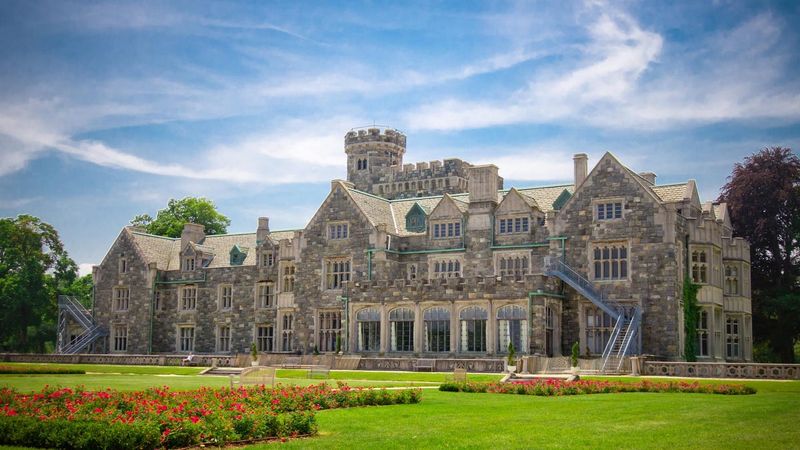
Standing majestically on Long Island’s North Shore, Hempstead House resembles a medieval European castle with its imposing stone façade and towering turrets. Built in 1912 for Howard Gould and later owned by Daniel Guggenheim, this 50,000-square-foot mansion boasts 40 rooms of pure luxury.
The grand entrance hall rises three stories with a spectacular staircase that seems to float in midair. Surrounding the mansion are formal gardens and breathtaking views of Long Island Sound that made this area the playground of New York’s elite.
Though much smaller than its European inspirations, Hempstead House remains one of the most impressive examples of castle-like architecture in America. Today it serves as a cultural center hosting concerts, art exhibitions, and educational programs.
2. Oheka Castle: America’s Second-Largest Private Home
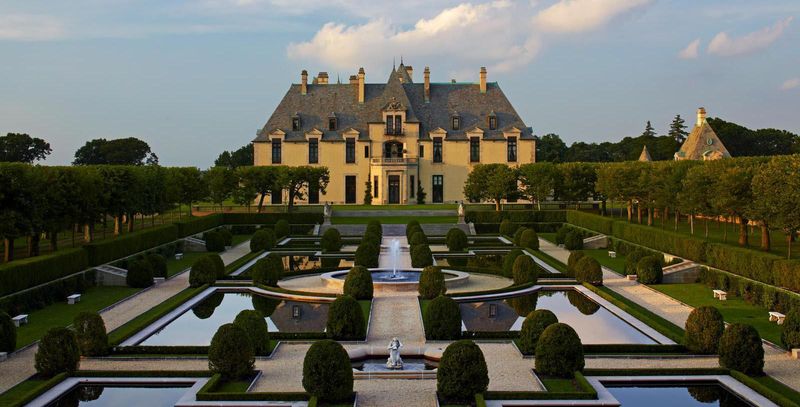
Perched on the highest point of Long Island, Oheka Castle commands attention with its massive French-château style and meticulous gardens. Financier Otto Hermann Kahn built this 109,000-square-foot masterpiece in 1919 as his country retreat, investing $11 million (equivalent to $158 million today).
The name ‘Oheka’ comes from the owner’s initials Otto Hermann Kahn. During its heyday, the estate employed 126 servants and hosted legendary parties attended by Hollywood stars and royalty. After falling into disrepair, it underwent a $30 million restoration.
Famous for appearing in movies and Taylor Swift’s ‘Blank Space’ music video, this magnificent mansion now operates as a luxury hotel and wedding venue. The formal gardens, designed by the Olmsted Brothers, remain a highlight for visitors.
3. Vanderbilt Mansion: Gilded Age Grandeur in Hyde Park
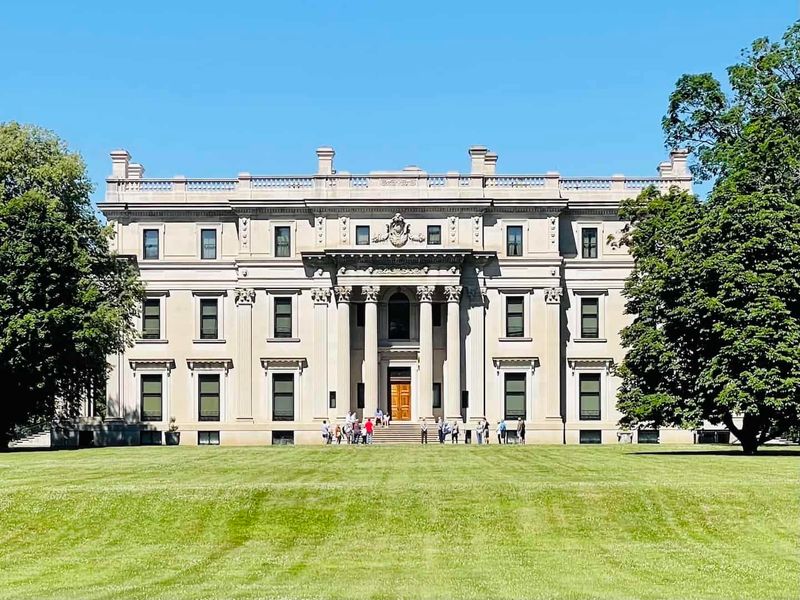
Frederick Vanderbilt’s magnificent estate stands as a perfect example of America’s Gilded Age opulence. Completed in 1899, this Beaux-Arts masterpiece sits on 211 acres along the Hudson River, offering spectacular views that captivated the railroad magnate’s eye.
Inside, visitors discover 54 rooms filled with European antiques, marble fireplaces, and ornate ceilings that showcase the family’s immense wealth. The formal gardens and sweeping lawns were designed by landscape architect Frederick Law Olmsted, famous for creating Central Park.
Unlike many historic estates, this mansion remains largely unchanged since the Vanderbilts lived here. The National Park Service maintains the property as a museum, allowing visitors to experience genuine Gilded Age luxury without modern alterations. The Italian gardens remain particularly stunning in spring.
4. Glenview Mansion: Victorian Splendor in Yonkers
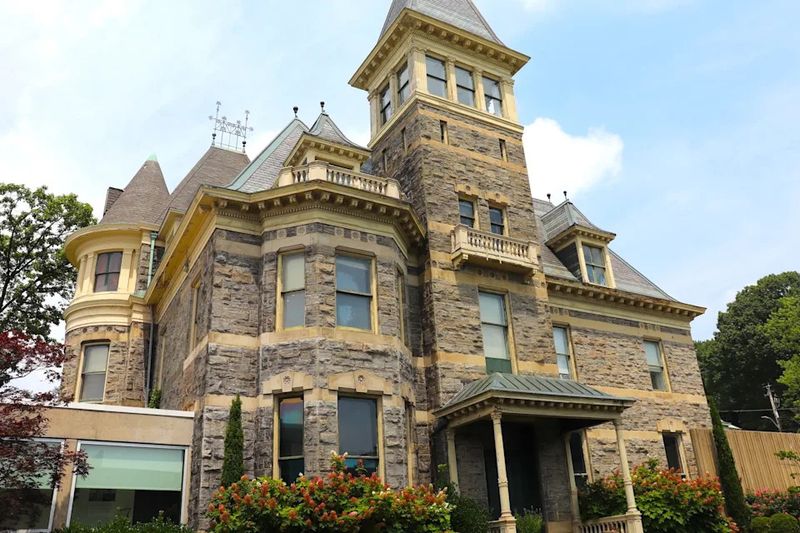
Banker John Bond Trevor commissioned this stunning Victorian mansion in 1877, creating one of the Hudson Valley’s architectural treasures. The 26-room house combines multiple styles including Second Empire, High Victorian Gothic, and Eastlake, resulting in a uniquely American interpretation of grandeur.
Glenview’s most famous feature is the Great Hall with its spectacular curved staircase and stained-glass skylight. Original furnishings throughout the mansion showcase the craftsmanship of the period, from hand-carved woodwork to elaborate ceiling decorations.
Since 1924, the mansion has served as part of the Hudson River Museum, preserving a perfect example of how wealthy New Yorkers lived during the Victorian era. Six period rooms transport visitors back in time, while the remaining spaces host art exhibitions celebrating Hudson Valley culture.
5. Schuyler Mansion: Revolutionary War History in Albany
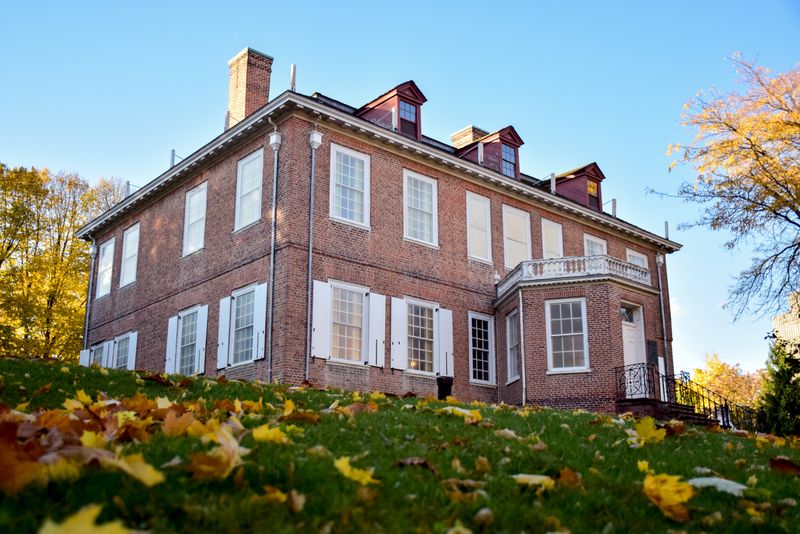
If walls could talk, Schuyler Mansion would tell tales of America’s founding fathers who once gathered within its elegant Georgian rooms. Built between 1761-1762 for Revolutionary War General Philip Schuyler, this historic home witnessed crucial moments in early American history.
Alexander Hamilton married Elizabeth Schuyler in the mansion’s parlor in 1780, connecting this property to one of America’s most fascinating founding figures. The house features 18th-century furnishings, portraits, and decorative arts that reflect the refined taste of Albany’s elite during this pivotal era.
Despite being smaller than some Gilded Age mansions, Schuyler Mansion holds greater historical significance. Today, visitors can tour the meticulously restored rooms where political strategies were debated and where the Schuyler sisters, made famous by the musical ‘Hamilton,’ grew up in Revolutionary-era New York.
6. Arden House: A Mountain Retreat Built by a Railroad Fortune
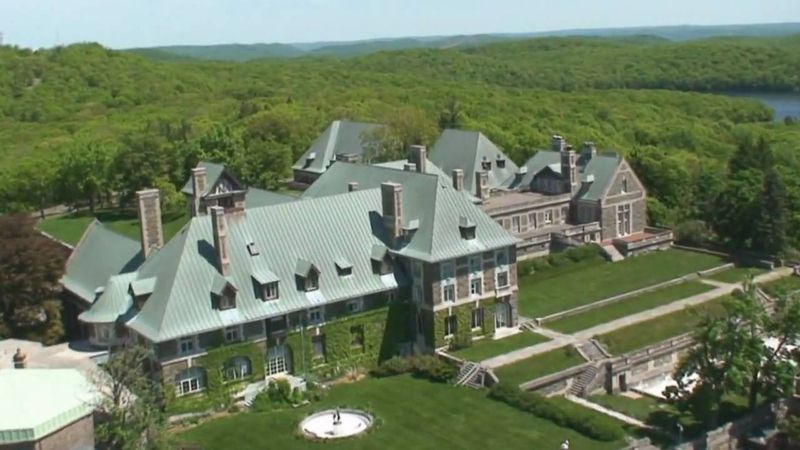
Edward H. Harriman, railroad tycoon and father of diplomat Averell Harriman, created this magnificent 100,000-square-foot mansion atop a mountain in Harriman State Park. Completed in 1909, Arden House sits at the center of what was once a 40,000-acre estate larger than the entire island of Manhattan!
The mansion features a central courtyard designed to bring the outdoors inside, with 97 fireplaces throughout the massive structure. Harriman envisioned the estate as both a family retreat and an intellectual gathering place, hosting scientists, writers, and explorers for stimulating discussions away from city life.
After serving as a conference center for Columbia University, this historic property now operates as a retreat and event venue. Hiking trails surrounding the mansion offer spectacular views of the Hudson Valley and access to the estate’s former wilderness playground.
7. Van Cortlandt Manor: Colonial Elegance in the Lower Hudson Valley
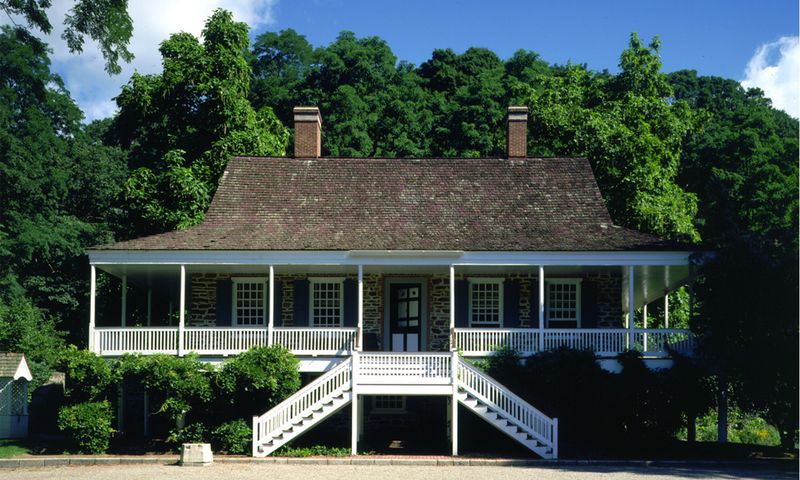
History comes alive at Van Cortlandt Manor, where three centuries of American life unfold across this remarkable riverfront estate. Built in the 1680s and expanded in the 1740s, this stone and brick manor house represents one of New York’s oldest surviving colonial homes.
The powerful Van Cortlandt family played significant roles in developing New York, with family members serving as mayors, governors, and military leaders. Their home features period furnishings, including the family’s original furniture, paintings, and decorative arts that showcase colonial craftsmanship.
Each October, the property transforms for the famous ‘Great Jack O’Lantern Blaze,’ where thousands of hand-carved pumpkins illuminate the historic grounds. The working gristmill, brick ferry house, and heritage gardens provide visitors with an authentic glimpse into daily life during America’s colonial and early national periods.
8. Rose Hill Mansion: Greek Revival Perfection in the Finger Lakes
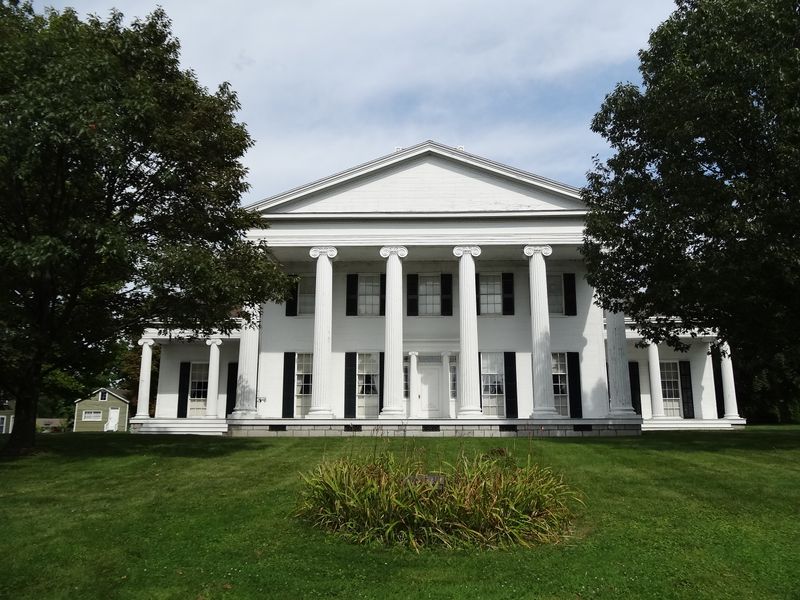
Overlooking Seneca Lake stands one of America’s finest Greek Revival homes, its gleaming white columns creating a temple-like silhouette against the rolling vineyard landscape. Built between 1839-1842 for the wealthy Swan family, Rose Hill represents the pinnacle of architectural fashion from its era.
The mansion’s perfectly proportioned exterior leads to equally impressive interiors featuring a grand central hall with a sweeping staircase. Period rooms showcase original and period-appropriate furnishings that highlight domestic life in upstate New York during the mid-19th century.
Unlike many historic estates, Rose Hill operated as a working farm for generations. Today, the property serves as a museum where visitors can explore both the elegant main house and the agricultural history of the Finger Lakes region. The surrounding countryside, now famous for its wineries, provides a picturesque setting.
9. Kykuit: The Rockefeller Estate Overlooking the Hudson
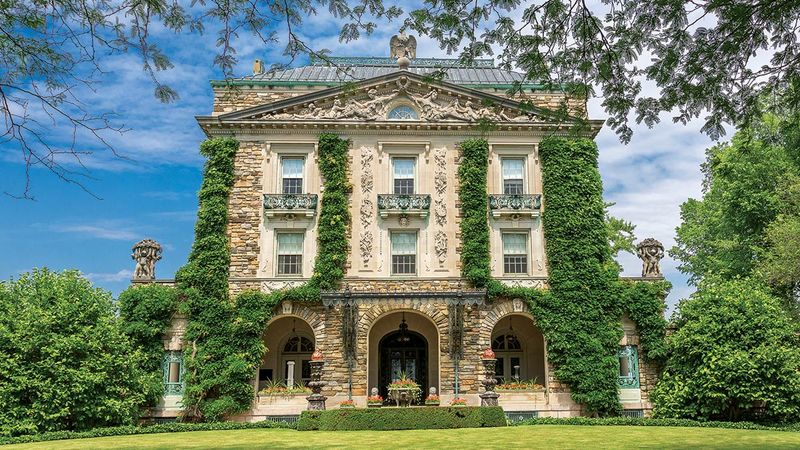
Kykuit, meaning ‘lookout’ in Dutch, perfectly describes this magnificent hilltop estate with panoramic views of the Hudson River. Built for oil magnate John D. Rockefeller and expanded by four generations of his family, this 40-room Colonial Revival mansion represents American wealth at its zenith.
The terraced gardens rank among America’s architectural treasures, featuring classical sculptures, fountains, and pavilions designed by America’s leading landscape architects. Inside, visitors discover priceless art collections alongside custom furnishings that reflect the family’s refined taste and global influence.
Most surprising is the basement gallery housing Nelson Rockefeller’s modern art collection, including works by Picasso, Warhol, and Calder. Six-story underground tunnels connect the mansion to other buildings on the property, demonstrating the family’s desire for both luxury and practicality in their private retreat.
10. Boldt Castle: A Monument to Tragic Love in the Thousand Islands
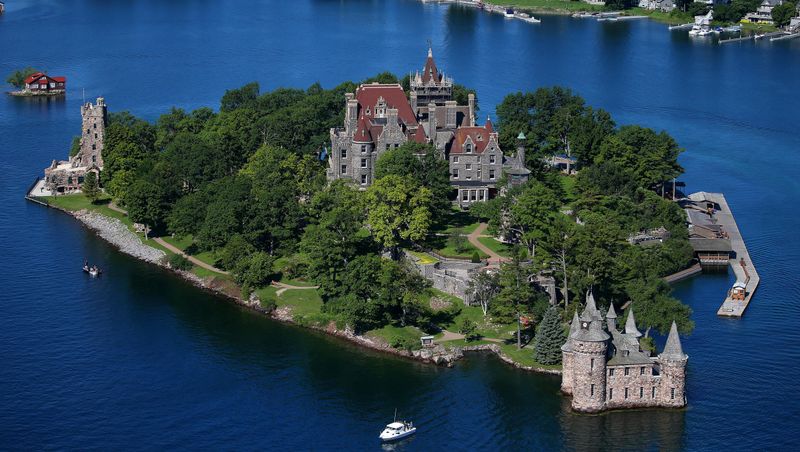
Rising from Heart Island in the St. Lawrence River stands Boldt Castle, a monument to both love and heartbreak. Hotel magnate George Boldt commissioned this 120-room Rhineland-style castle in 1900 as a testament of his love for his wife Louise, sparing no expense on the six-story structure.
Tragedy struck when Louise suddenly died in 1904, causing a devastated Boldt to immediately halt all construction. For 73 years, the unfinished castle stood abandoned to the elements until the Thousand Islands Bridge Authority purchased it and began restoration work.
Today, visitors arrive by boat to explore this remarkable property, including the Power House, Alster Tower, and Italian Gardens. Though never completed as originally envisioned, Boldt Castle has become the region’s most famous landmark and a testament to one man’s romantic vision and heartbreaking loss.
11. Singer Castle: A Medieval Fortress on Dark Island
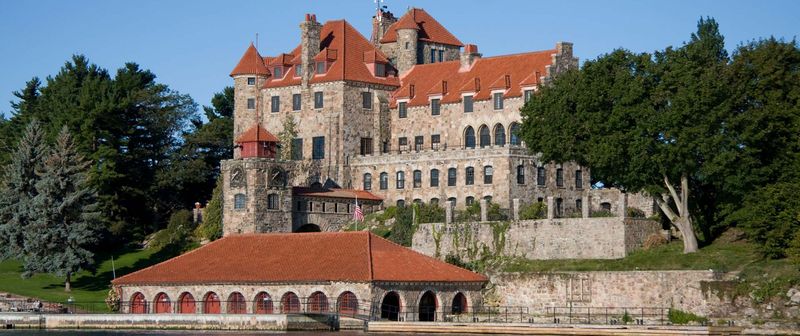
Frederick Bourne, president of the Singer Sewing Machine Company, created this secret-filled castle as his summer retreat in the Thousand Islands. Completed in 1905, the granite fortress features 28 rooms, including hidden passages, a dungeon, and underground tunnels inspired by Sir Walter Scott’s novel “The Talisman.”
Unlike many Gilded Age mansions built for show, Singer Castle was designed for both defense and deception. The library contains a secret door leading to observation rooms where staff could spy on guests through one-way mirrors a peculiar feature that reveals the owner’s fascination with privacy and control.
Accessible only by boat, this mysterious island castle remained a private residence until 2003. Now open for tours and overnight stays, visitors can explore the stone towers, massive fireplaces, and elaborate gardens while experiencing the isolation that attracted wealthy New Yorkers to this remote island paradise.
12. Lyndhurst Mansion: Gothic Revival Fantasy in Tarrytown
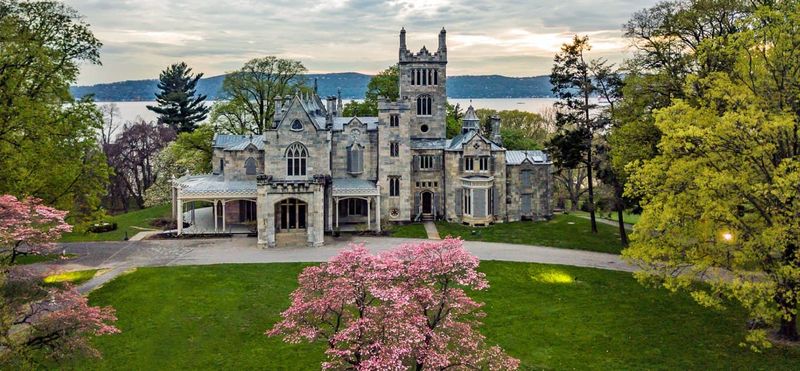
Lyndhurst’s dramatic silhouette with pointed arches and asymmetrical towers makes it America’s finest Gothic Revival mansion. Designed in 1838 by architect Alexander Jackson Davis, this architectural masterpiece sits on 67 acres overlooking the Hudson River, its stone façade seeming to grow naturally from the landscape.
Railroad tycoon Jay Gould purchased the estate in 1880, adding priceless art and antiques that remain today. The mansion’s interiors feature hand-carved woodwork, stained glass windows, and original furnishings that transport visitors back to the 19th century.
Hollywood discovered Lyndhurst’s dramatic architecture, using it as a filming location for movies and TV shows including the 1970s vampire soap opera “Dark Shadows.” The estate’s rose garden, fern garden, and sweeping lawns provide a perfect counterpoint to the mansion’s somewhat brooding appearance, creating one of New York’s most photogenic historic properties.
13. Oakhurst: An Arts and Crafts Jewel in the Catskills
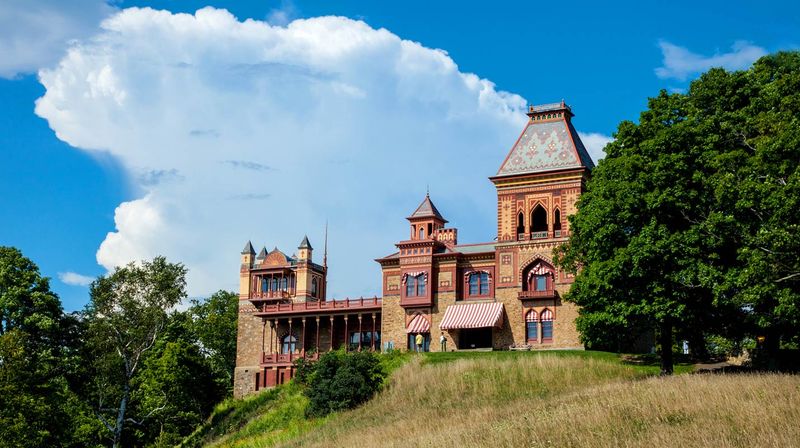
Hidden among the Catskill Mountains is Oakhurst, a spectacular Arts and Crafts style mansion that represents a departure from the classical designs favored by many Gilded Age millionaires. Built in 1905 for industrialist Horace Lamberton, this stunning retreat embraces natural materials and craftsmanship rather than European grandeur.
Massive stone fireplaces anchor interior spaces filled with hand-crafted furniture, stained glass windows, and exposed wooden beams. Unlike the formal gardens of other mansions, Oakhurst’s grounds blend seamlessly with the surrounding forest, reflecting the Arts and Crafts movement’s celebration of nature and simplicity.
After serving as a retreat center for decades, the property has been carefully restored to showcase its original character. Visitors today can appreciate how this architectural style represented a reaction against industrial mass production, ironically funded by the very industrialists who made fortunes from factories.
14. Eagle’s Nest: William K. Vanderbilt’s Harbor Hideaway
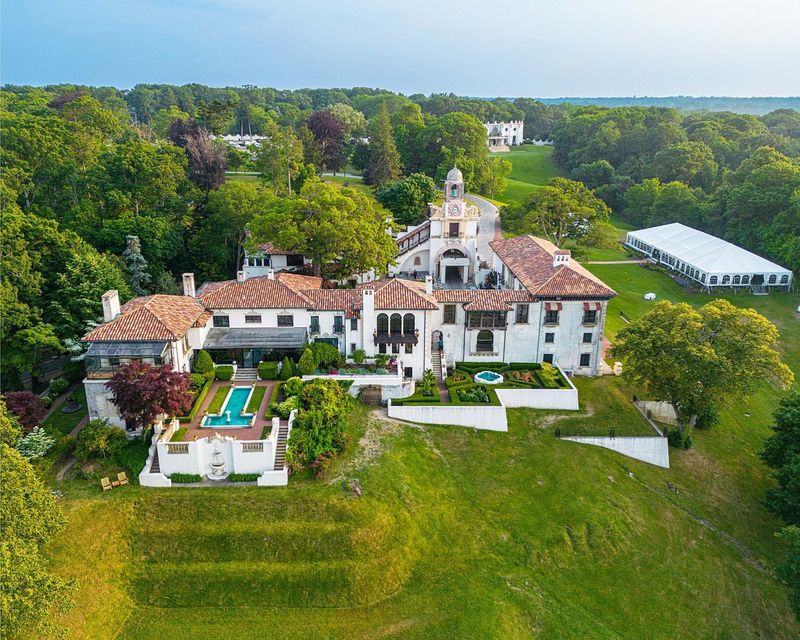
William K. Vanderbilt II, great-grandson of railroad magnate Cornelius Vanderbilt, created this Spanish Revival estate as his summer residence and personal museum. Completed in 1936, Eagle’s Nest combines Mediterranean architecture with museum-quality spaces designed to house Vanderbilt’s extensive natural history and cultural collections.
The 24-room mansion sits on 43 acres overlooking Northport Harbor, its stucco walls and red-tiled roof evoking the romance of southern Spain. Unlike his ancestors’ more formal estates, Vanderbilt designed this property as both a home and educational institution, reflecting his passion for science, exploration, and sharing knowledge.
Today, the Vanderbilt Museum and Planetarium fulfills the owner’s vision, displaying thousands of artifacts from his global expeditions. The mansion remains largely as Vanderbilt left it, with original furnishings, artwork, and personal items that reveal the interests of this adventurous heir to one of America’s greatest fortunes.
15. Hunter House: Newport’s Gilded Age Colony in New York
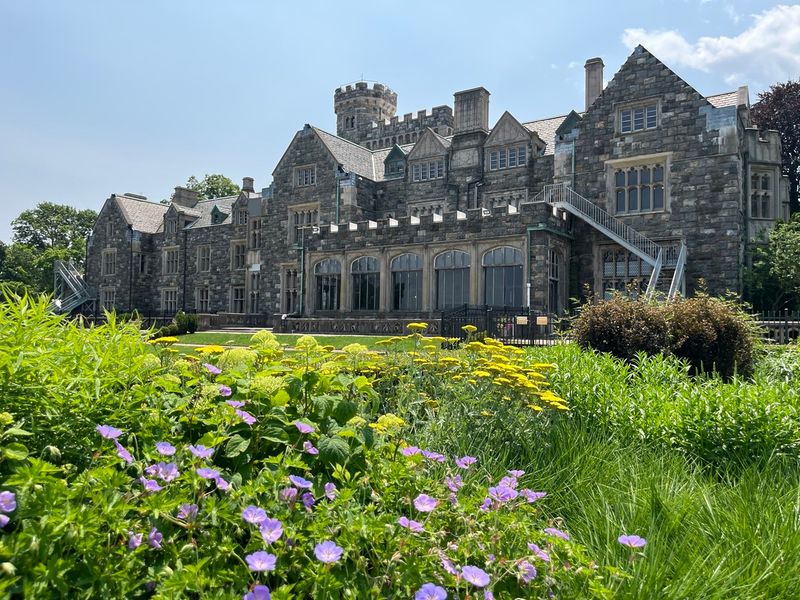
When New York’s elite wanted to escape summer heat, many headed to Hunter House, one of the first “cottages” establishing Westchester County as a luxury retreat. Built in 1889 for railroad executive Collis P. Huntington, this Colonial Revival mansion brought Newport-style opulence to the shores of Long Island Sound.
The 40-room mansion features hand-carved woodwork, imported marble, and massive windows capturing spectacular water views. Though called a “cottage” in the understated language of the wealthy, Hunter House rivals European palaces with its grand ballroom, formal dining room seating 30 guests, and extensive servant quarters.
After serving as a hospital during World War II, the property became a conference center and hotel. The mansion’s original boathouse, stables, and gate lodge remain intact, providing a glimpse into the lifestyle of New York’s industrial aristocracy who created private compounds along the sound.
16. Marble House: Alva Vanderbilt’s Architectural Statement
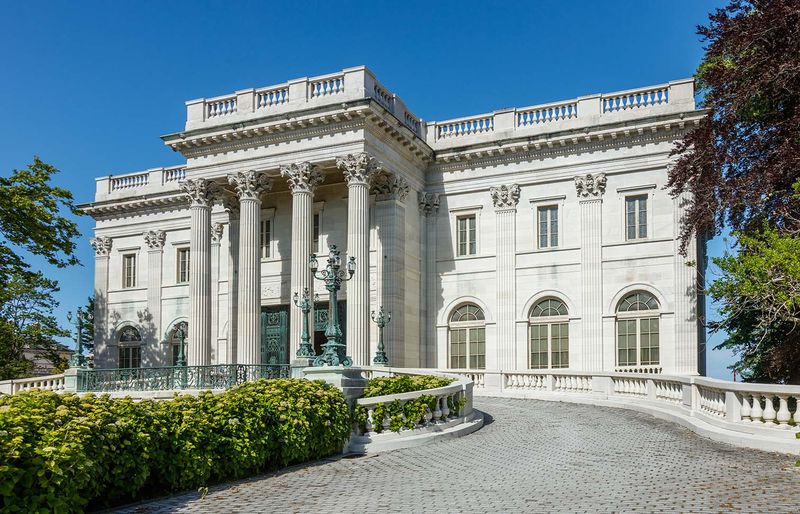
When Alva Vanderbilt wanted to establish her social dominance in New York society, she commissioned Marble House, a neo-classical palace using 500,000 cubic feet of marble. Completed in 1892 at a cost of $11 million (equivalent to over $300 million today), this mansion was intended as Alva’s “temple to the arts” and her ticket to social acceptance.
The Gold Ballroom remains the mansion’s most spectacular space, covered in gold leaf and designed to outshine every other home in New York. Interestingly, Alva used the house for only four years before divorcing William K. Vanderbilt and later becoming a prominent women’s suffrage activist.
Though technically located in Newport, Rhode Island, the mansion was built with New York railroad money and designed by New York architect Richard Morris Hunt. Its influence on New York society and architecture made it a crucial part of the state’s Gilded Age legacy.
17. Rosecliff: Theresa Fair Oelrichs’ “Party Palace”
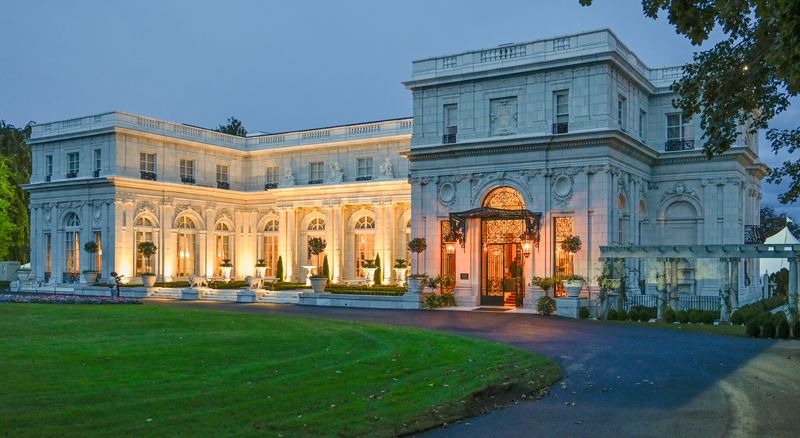
Nevada silver heiress Theresa Fair Oelrichs built Rosecliff specifically for entertaining New York’s social elite on a grand scale. Completed in 1902 and modeled after the Grand Trianon at Versailles, this white terra-cotta palace features the largest ballroom in Newport, designed for spectacular parties that became legendary during the Gilded Age.
Mrs. Oelrichs, who married into a prominent New York shipping family, hosted famous “white parties” where guests dressed entirely in white and danced until dawn. The mansion’s heart-shaped staircase and ocean views provided perfect backdrops for society photographers documenting these lavish events.
Film buffs might recognize Rosecliff from “The Great Gatsby” (1974) and “True Lies.” Though located in Newport, Rhode Island, the mansion represents the extravagant lifestyle of New York’s wealthy families who maintained multiple homes designed for specific social seasons and functions.
18. The Breakers: Cornelius Vanderbilt II’s Summer “Cottage”
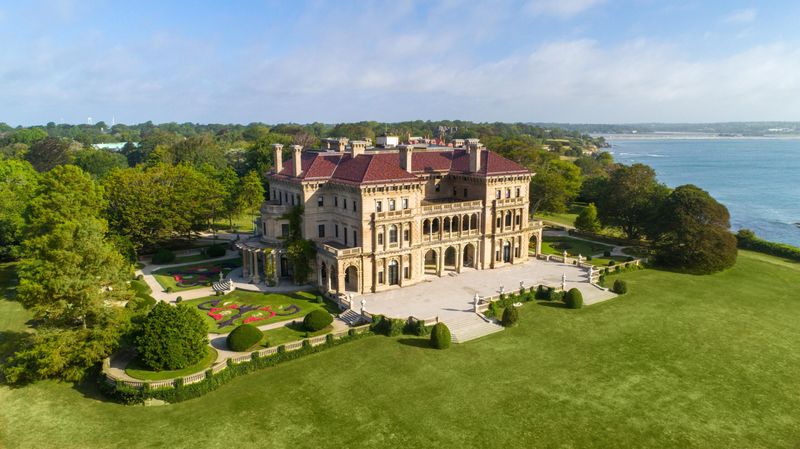
The Breakers stands as the grandest of all Vanderbilt homes, a 70-room Italian Renaissance-style palazzo built as a summer residence for Cornelius Vanderbilt II, chairman of the New York Central Railroad. Completed in 1895 at a cost of $7 million (over $200 million today), this architectural marvel sits on 13 acres of oceanfront property.
Every surface inside showcases extraordinary craftsmanship – platinum wall panels, mosaics from Italy, and ceilings painted by European artists transported to America specifically for this project. The Great Hall rises 50 feet with a massive skylight illuminating marble imported from Africa and Europe.
Though located in Newport, Rhode Island, The Breakers represents the pinnacle of New York wealth and power during the Gilded Age. The Vanderbilt family, whose fortune began and was headquartered in New York, created this summer palace as an extension of their Manhattan lifestyle.
19. Frick Mansion: From Private Home to World-Class Museum

Henry Clay Frick, the controversial steel magnate and art collector, built this magnificent Beaux-Arts mansion on Fifth Avenue directly across from Central Park. Completed in 1914, the limestone mansion was designed from the beginning to eventually become a public museum housing Frick’s extraordinary art collection.
Unlike many Gilded Age mansions designed primarily to impress, Frick created intimate rooms scaled for displaying his masterpieces by Rembrandt, Vermeer, and Gainsborough. The central garden court with its fountain and skylight provides a peaceful contrast to the bustling city outside.
After Frick’s death in 1919, the mansion was transformed into the Frick Collection, one of New York’s most beloved museums. The family’s private living quarters upstairs remained closed for decades but have recently been renovated and opened to the public, revealing how the Frick family lived among their treasures.
20. Morris-Jumel Mansion: Manhattan’s Oldest Surviving House
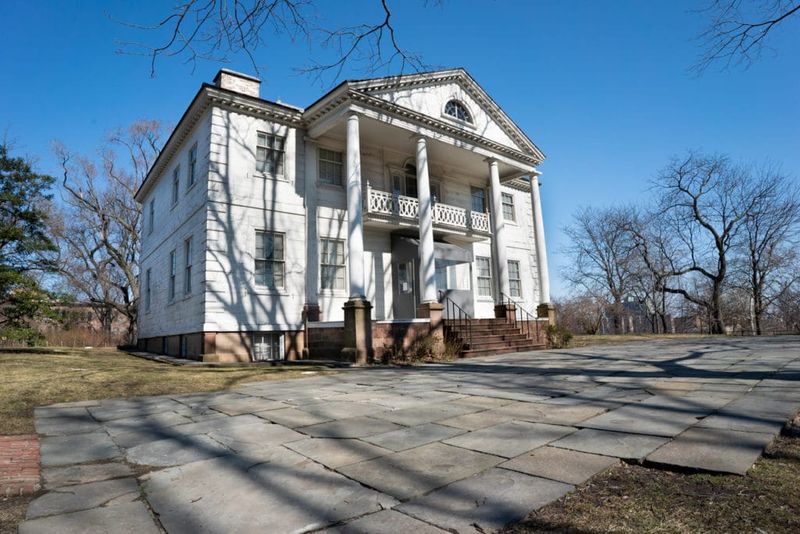
Perched on one of Manhattan’s highest points sits the Morris-Jumel Mansion, a remarkable survivor from 1765 when much of the island remained farmland. British colonel Roger Morris built this Georgian mansion as a summer villa, taking advantage of breezes and spectacular views stretching from the Harlem River to New York Harbor.
During the Revolutionary War, George Washington used the house as his headquarters during the Battle of Harlem Heights. Later, the controversial French merchant Stephen Jumel and his wife Eliza purchased the property, adding Federal and Empire style elements that remain today.
After Stephen’s death, Eliza briefly married former vice president Aaron Burr in the mansion’s parlor. The house became a museum in 1904, preserving period furnishings, decorative arts, and personal items from its fascinating residents. Today it stands as Manhattan’s oldest surviving residence, offering a rare glimpse into New York’s colonial past.
21. Merchant’s House Museum: Preserved Perfection in NoHo
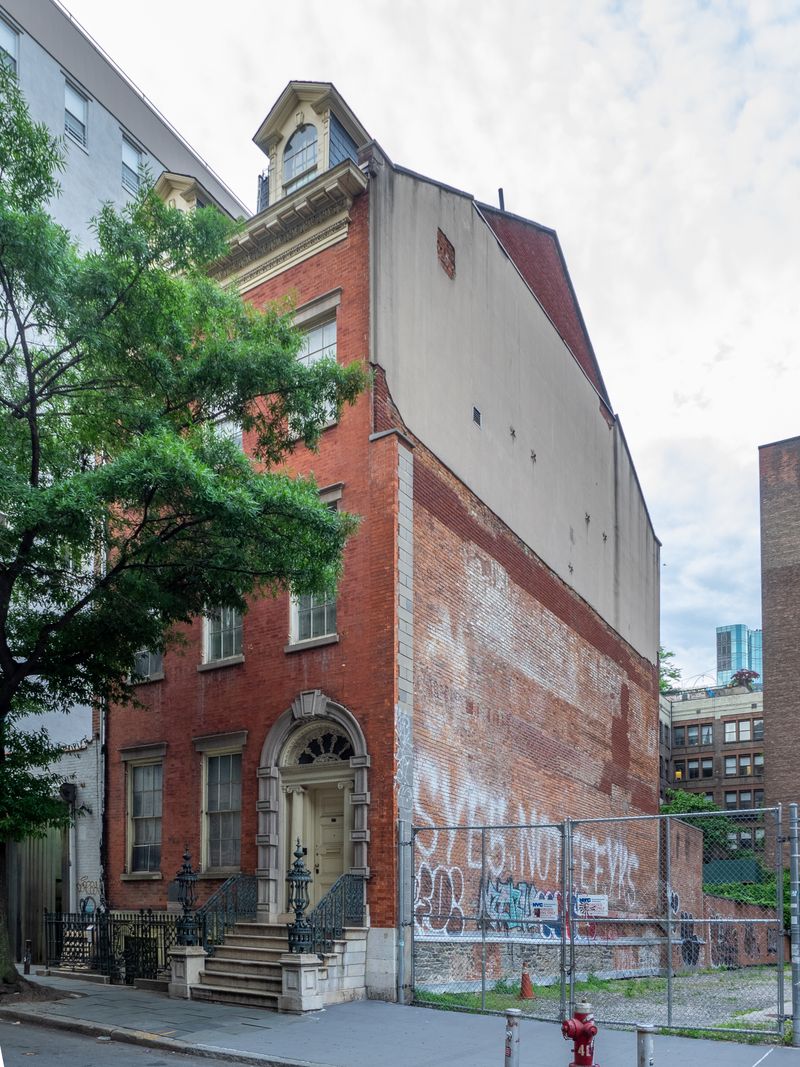
Time stands perfectly still inside the Merchant’s House Museum, New York City’s most intact 19th-century home. Built in 1832 and occupied by the prosperous Tredwell family for nearly 100 years, this red-brick row house offers an unparalleled glimpse into the domestic life of New York’s merchant class.
Unlike mansions built by industrial tycoons, this elegant home represents the lifestyle of successful but not extravagantly wealthy New Yorkers. The interiors remain virtually unchanged since 1865, with original furnishings, decorative arts, clothing, and personal possessions still in place.
Many believe the house remains occupied by more than just visitors it’s considered New York’s most haunted building, with numerous reports of encounters with Gertrude Tredwell, who was born in the house in 1840 and never left until her death in 1933. The perfectly preserved Greek Revival interiors make this museum an architectural time capsule.


